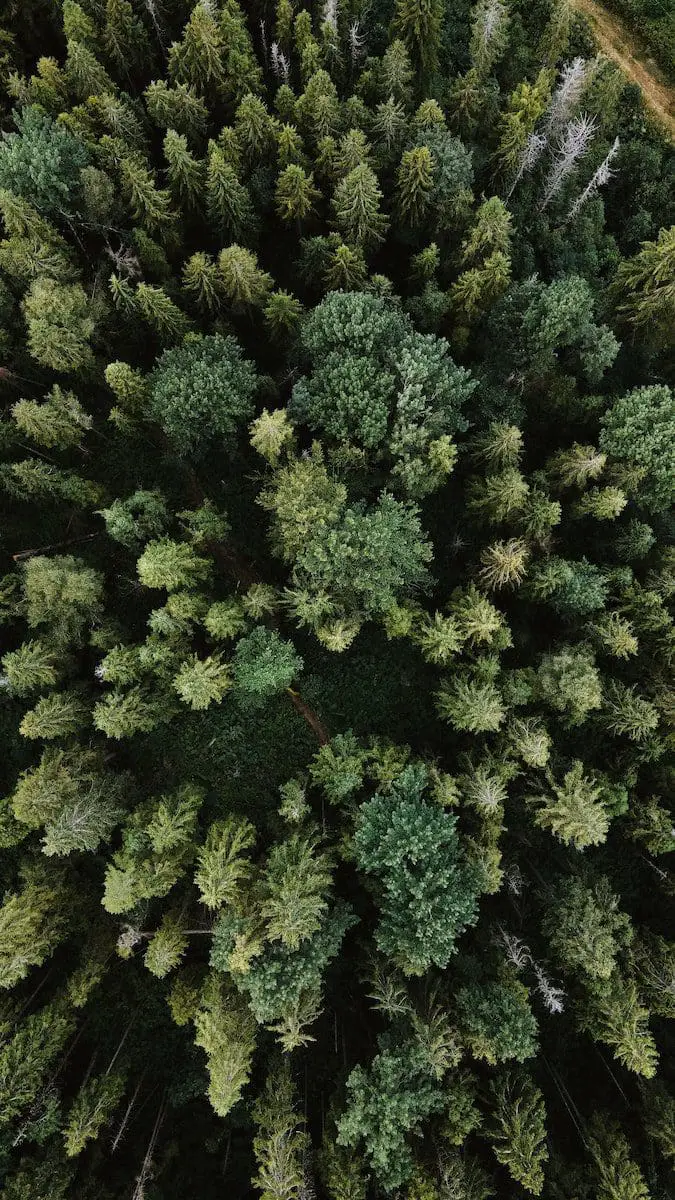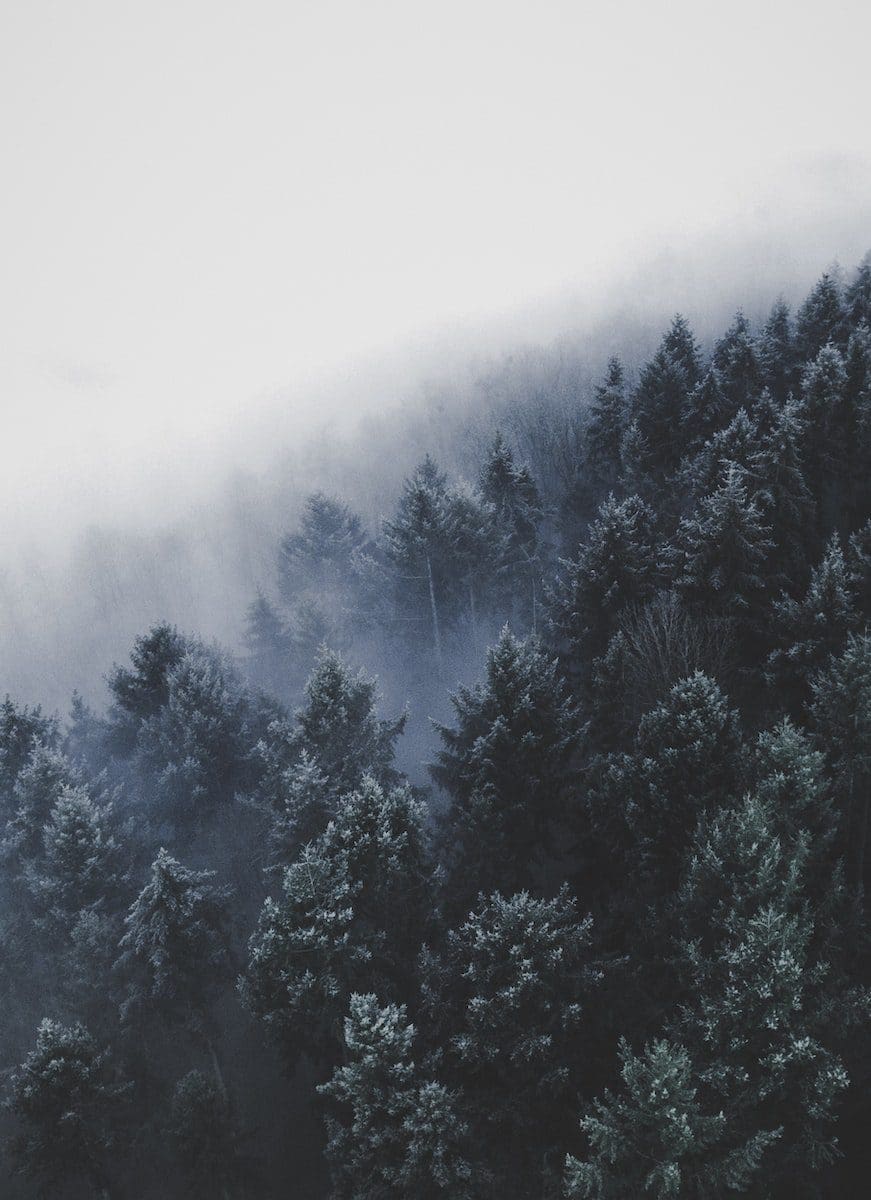To conserve water, coniferous trees have adapted to the colder weather conditions of their existence by converting their leaves into needle-like structures. The color-changing leaves of a deciduous tree are significantly different from their coniferous counterparts.
Several other dissimilarities supplement this difference.
Key Takeaways
- Deciduous trees shed their leaves annually in the fall and regrow them in the spring; coniferous trees retain their needles or scales year-round.
- Deciduous trees have broad, flat leaves, while coniferous trees have needle-like or scale-like leaves.
- Deciduous trees are more common in temperate climates, while coniferous trees are found in colder regions or high altitudes.
Deciduous vs. Coniferous
The difference between deciduous and coniferous trees is in terms of the leaves each variety of tree produces. While deciduous trees are known for their distinguishable broad leaves that are shed during the autumn months, coniferous trees are known for their thin, needle-like leaves that are fairly different from any other varieties of flora.

Comparison Table
| Parameters of Comparison | Deciduous | Conifers |
|---|---|---|
| Leaves | Broad leaves that bloom during spring and are shed during the autumn season. | Thin needle-like modified structures that have replaced leaves. |
| Wood Type | These are hardwood trees that are used to make furniture. | These are softwood trees that are commonly used to make paper. |
| Weather Conditions of Existence | Found in the warmer regions of the world. | Found in the world’s colder regions, especially in the Tundra region. |
| Fruits and Flowers | Colorful fruits and flowers are produced. | No fruits and flowers are produced. Cones containing seeds are produced. |
| Color of Leaves | The color of leaves changes during the autumn and winter months. | The needle-like leaves do not change their color. |
| Shape of Foliage | These trees grow outward, and thus the foliage is broad. | These trees grow upward in the shape of a cone. |
| The Season for Shedding Leaves | Leaves are shed during the autumn season. | Leaves are shed all year round and constantly replaced by new ones. |
What are Deciduous Trees?
Deciduous trees are broad-leaved trees that shed their leaves during a particular year- namely, autumn. The word deciduous means ‘to shed at maturity.’
This signifies that the leaves of these trees turn into bright shades of red, orange, and yellow during the autumn months and fall to the ground.
These trees shed their leaves to reduce water loss through transpiration during the winter months. Some deciduous trees may also shed their leaves during the dry season to conserve water.
With the onset of the spring season, new leaves begin to grow on their branches.
These trees are known to produce beautifully colored flowers and fruits. The pigmentation of the flowers and fruits aid in seed dispersal by attracting the various agents of pollination.
The hardwood from these trees is extremely valuable and expensive. Wood from trees like Oak, Maple, Cherry, and Birch is used to manufacture furniture.

What are Coniferous Trees?
Coniferous trees have needle-like structures instead of leaves to reduce water loss in the cold regions of their existence. The waxy outer coating of these leaves reduces transpiration.
The name of these trees translates to ‘cone-bearing trees.’ Thus, instead of flowers and fruits, they produce seed-containing cones.
These trees grow to great heights in a cone-shaped manner. This enables them to withstand the weight of snow on their branches and prevents them from collapsing.
Unlike deciduous trees, they do not have a season dedicated to the shedding of leaves. They replace old leaves throughout the year.
This makes most confers evergreen trees. The softwood from these trees is essential for paper production.
Fir, Pine, and Cedar Junipers are well-known conifers found in the tundra regions of the world.

Main Differences Between Deciduous and Coniferous
- The main difference between these two tree varieties is the structure of the leaves found in each. At the same time, deciduous trees have broad leaves that bloom during spring and are shed during autumn, while coniferous trees like dark green needle-like leaves that are modified in response to the cold, harsh weather conditions these trees have to sustain.
- The two trees’ quality of wood produced under each variety significantly differs. Deciduous trees are renowned for their hardwood barks.
Hardwood from these trees is used to make furniture, whereas coniferous trees produce softwood. This kind of wood is used in matchbox and paper production. - Another difference can be noted in terms of the fruits and flowers produced by each variety of flora. While deciduous trees produce many fruits and flowers, coniferous trees produce neither.
Instead, conifers produce seed-containing cones. - Deciduous trees flower during the period marked by the absence of leaves. Whereas, coniferous trees do not produce flowers.
- The shape of the deciduous tree foliage is also quite different from that of the coniferous foliage. The former grows outward- spanning across a region- to maximize the absorption of sunlight.
However, coniferous forests grow to great heights, almost like a cone. This prevents the trees from collapsing under the weight of snow. - Deciduous trees are commonly found in the world’s warmer regions. Coniferous trees are common in the tundra regions.
- Deciduous trees are known to change the color of their leaves, especially in autumn, when they turn into shades of red, orange, and yellow. However, the needle-like leaves of coniferous trees do not change color.

The author offers a compelling comparison of deciduous and coniferous trees, delving into the key takeaways and intricate details to illustrate the contrasting characteristics of each tree type.
The article provides a comprehensive explanation of the distinct features of deciduous and coniferous trees. I particularly enjoyed learning about the unique adaptations of coniferous trees to reduce water loss in cold climates.
The comparison between deciduous and coniferous trees presents an intriguing contrast in their characteristics, emphasizing the adaptive strategies employed by these trees to thrive in varying climates.
While I appreciate the detailed comparison, I still have some reservations regarding the environmental impact and ecological significance of these tree varieties. The article could explore these aspects more thoroughly.
The contrast between deciduous and coniferous trees is presented in a very informative manner. This has increased my understanding of how these trees have evolved to thrive in different environmental conditions.
It’s fascinating to learn about the various adaptations of deciduous and coniferous trees to their respective environments. The differences in leaf structure, wood type, and the timing of shedding are truly remarkable.
This article provides an excellent, in-depth comparison between deciduous and coniferous trees, highlighting the major differences in a clear and concise manner.
I appreciate the thorough analysis of deciduous and coniferous trees in this article. The information provided is well-researched and enhances our understanding of these diverse tree varieties.
The article effectively highlights the main differences between deciduous and coniferous trees, shedding light on their unique features and ecological adaptations.
I found the section on the main differences between deciduous and coniferous trees very enlightening. I wasn’t aware of the specifics related to the wood types, climate preferences, and shedding seasons of these trees. Fascinating!